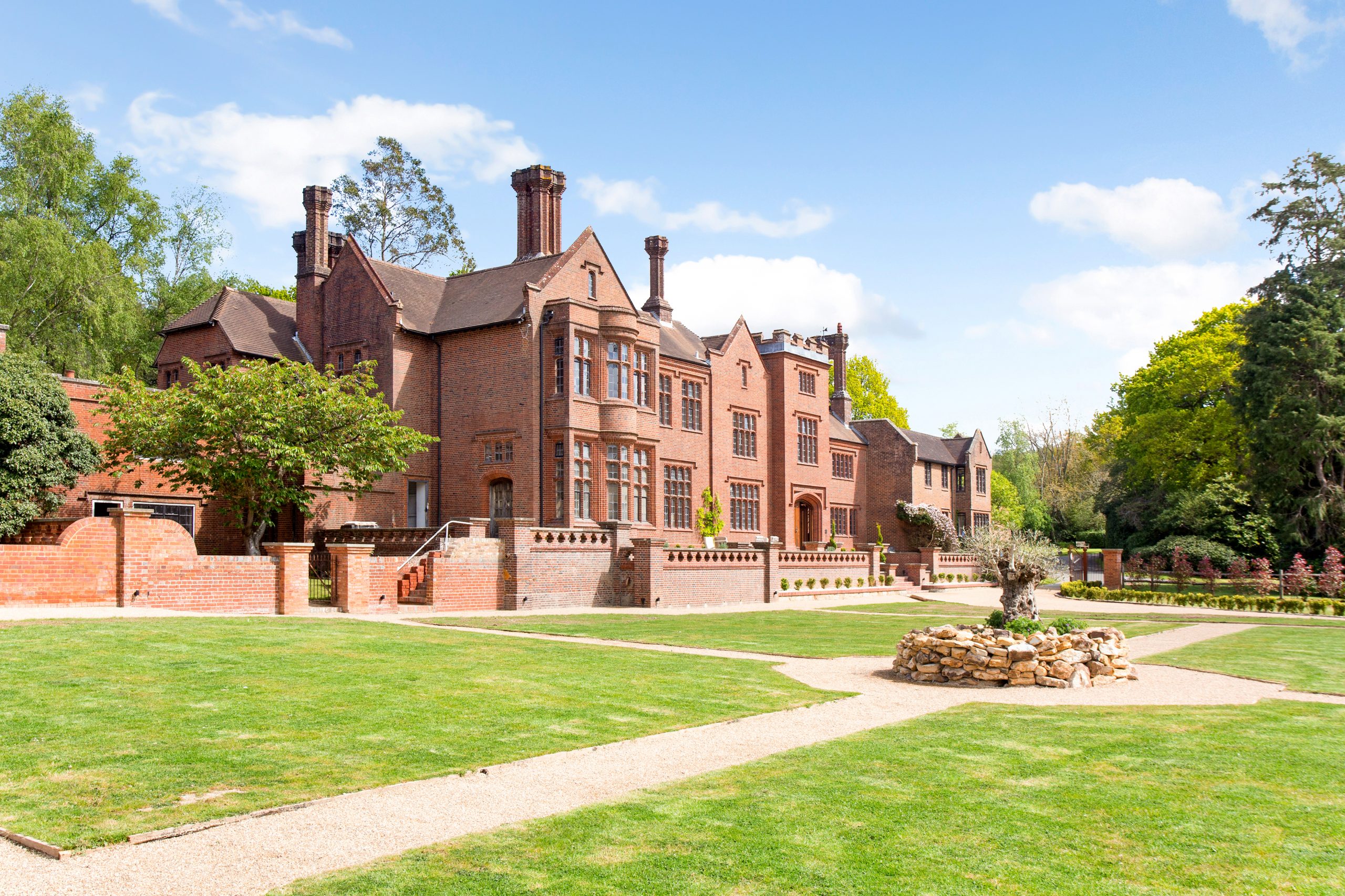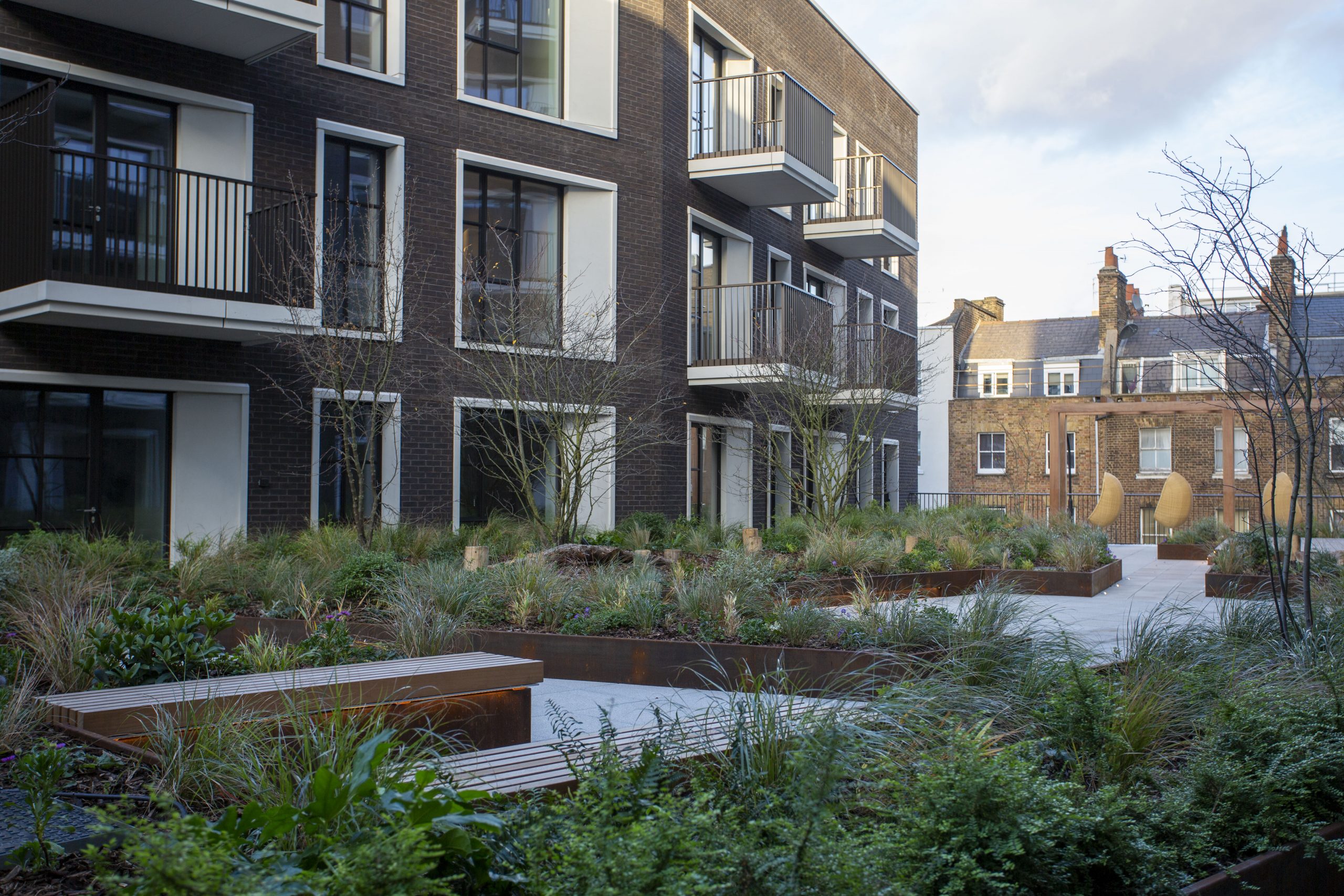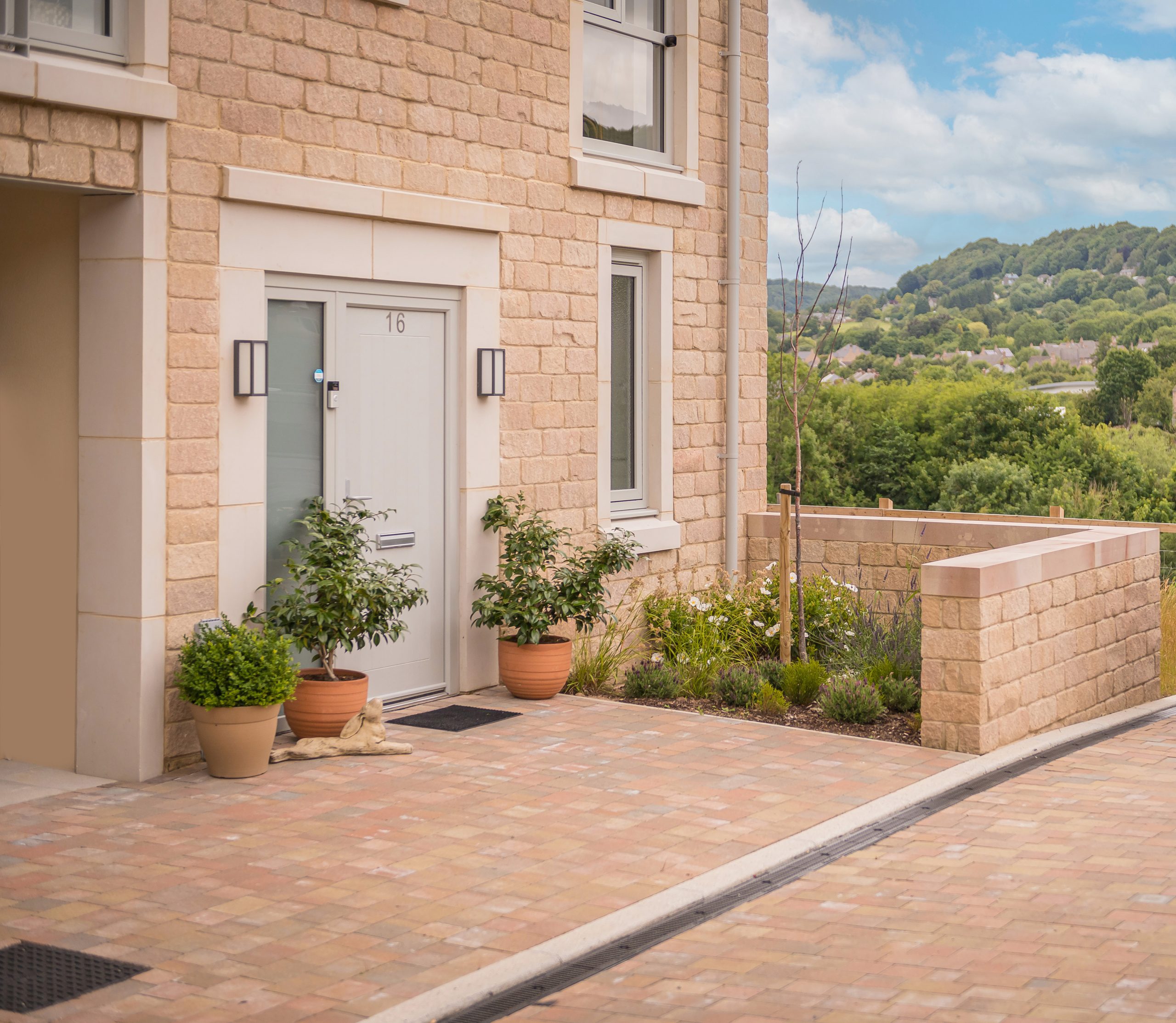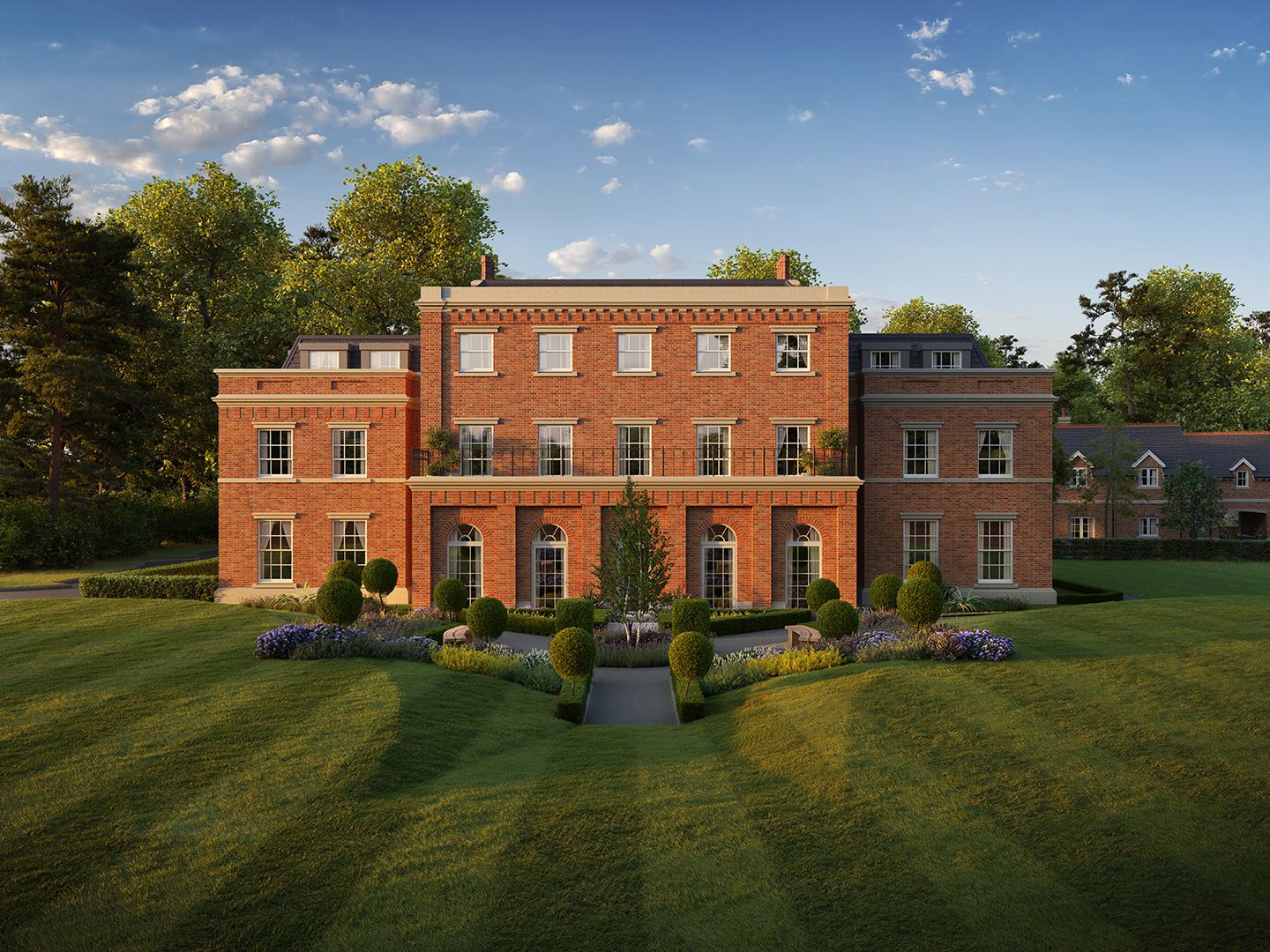Love them or loathe them, new builds are here to stay, as their popularity continues to rise
There’s no doubt about it — new-build homes are increasingly popular. From convenience and preference for local materials to environmental benefits, Annunciata Elwes finds out why.


Despite the lamented shortages of everything from timber to glass, not to mention workers, which has hampered the completion of many a property this year, the popularity of new-builds appears to be steadily rising. In fact, research from global investment gurus JLL shows that annual reservations in Q1 2022 were up by 45%.
‘Covid-19 highlighted the importance that you need to love where you live,’ explains Maria Harikantra of JLL’s capital markets team. In London at least, ‘choosing to live in a new-build home has become a lifestyle choice with the opportunity to become part of a wider community’, with new-builds often in ‘neighbourhoods that are either already sought-after… or in regeneration areas that are fast evolving… [into] cultural hotspots’.
The working-from-home benefits are obvious and although countryside developments often offer buyers more opportunity to tailor a home to requirements, many in the city contain meeting rooms, 24-hour concierges and gyms.

The 88 New York-loft-style apartments at 101 on Cleveland, London W1, are a great example, with applicants up 25% in three months and 62% on last year. Interest has come from ‘a range of buyers—from students who want close proximity to university to frequent travellers who value connectivity,’ adds Miss Harikantra. Prices start from £1.3 million and four three-bedroom penthouses recently launched, from £4.2 million (www.101oncleveland.com).
Another factor of increasing concern is the environment: ‘Whether they are driven purely by costs, social responsibility or likely a combination of both; what is clear is that buyers will be taking energy consumption into consideration more,’ says Meg Eglington, JLL’s senior residential research analyst.
‘Findings from JLL’s latest Living Priorities survey showed that 80% of respondents said the environmental impact of their home will be either crucial or important in their next move, with the number of people willing to purchase a new home (if it meant improved environmental efficiency) rising from 51% from their last move, to 78% going forward.’ Meanwhile, in the UK, ’83% of new-build properties boast an EPC rating of A or B, versus only 3% for existing stock’.

The community and environmental aspects of new-builds in cities translate well into the countryside, particularly for clever developers who appreciate a dose of history; The Prince of Wales’s Poundbury in Dorset springs to mind, as does Charles Rifkind’s ongoing transformation of abandoned Cawdor Quarry—which once provided stone for Hyde Park Corner and the Thames Embankment—a short walk from Georgian Matlock in the Peak District. Working with David Morley Architects, the local landowner is creating five villages known as Matlock Spa, with 500 sustainable homes for some 2,000 people that focus on wellbeing, much like the spa towns of old (www.matlockspa.com).
Sign up for the Country Life Newsletter
Exquisite houses, the beauty of Nature, and how to get the most from your life, straight to your inbox.
Once complete in 2025, there will be Classical crescents, woodland lodges, courtyard cottages and villas, all in local stone and slate, with further eco credentials from an ecology park, modern insulation, air-source heat pumps and business units with grass roofs and solar panels; cars will be hidden and roads designed to encourage walking and cycling. ‘It will change Derbyshire,’ comments the Duke of Devonshire, whose seat, Chatsworth, is eight miles away.
Mr Rifkind, who endured a 20-year-long planning process before work could begin, comments: ‘We have set out to create a new place of beauty and architectural merit that will stand the test of time, reflecting this extraordinary setting… We want Matlock Spa to establish positive principles for creating high-quality homes that enhance the landscape in other parts of England, rather than the nondescript housing delivered by some of the major housebuilders.’

The first phase of townhouses, terraced cottages, apartments and penthouses launched in 2020 (from £330,000) and with 60% occupied, demand has been high, reports Anthony Taylor of Fine & Country, both ‘from families… along with young professionals and couples… There is nothing to compare with Matlock Spa’. The next phase of 24 apartments gets under way this week and will complete in September 2023.
More familiar to most, perhaps, are the smaller scale rural conversions, embellishments and new ‘country-house complexes’. One example is Grade II-listed Downash House in Flimwell, East Sussex, where family-run Nicol Developments has created eight two- and three-bedroom apartments, with Victorian features alongside sleek, modern bathrooms and kitchens; from £495,000 with Hamptons.
Another is Winkfield Park, near Ascot in Berkshire—a collection of 15 new houses and apartments set to complete in August and September respectively, including coachhouses and a five-bedroom farmhouse, with five acres of landscaped grounds within 30-acre Winkfield Park Polo Club; from £1.1 million through Savills.
Developments such as these have been popping up for years; the commuter links tend to be excellent and the quality is getting better and better as more people catch on to the benefits. Wherever it is, ‘a new home is a blank canvas that buyers can make their own,’ concludes Hamptons’ James Dalton.
Annunciata grew up in the wilds of Lancashire and now lives in Hampshire with a husband, two daughters and an awful pug called Parsley. She’s been floating round the Country Life office for more than a decade, her work winning the Property Magazine of the Year Award in 2022 (Property Press Awards). Before that, she had a two-year stint writing ‘all kinds of fiction’ for The Sunday Times Travel Magazine, worked in internal comms for Country Life’s publisher (which has had many names in recent years but was then called IPC Media), and spent another year researching for a historical biographer, whose then primary focus was Graham Greene and John Henry Newman and whose filing system was a collection of wardrobes and chests of drawers filled with torn scraps of paper. During this time, she regularly gave tours of 17th-century Milton Manor, Oxfordshire, which may or may not have been designed by Inigo Jones, and co-founded a literary, art and music festival, at which Johnny Flynn headlined. When not writing and editing for Country Life, Annunciata is also a director of TIN MAN ART, a contemporary art gallery founded in 2021 by her husband, James Elwes.
-
 Some of the finest landscapes in the North of England with a 12-bedroom home attached
Some of the finest landscapes in the North of England with a 12-bedroom home attachedUpper House in Derbyshire shows why the Kinder landscape was worth fighting for.
By James Fisher Published
-
 The Great Gatsby, pugs and the Mitford sisters: Country Life Quiz of the Day, April 16, 2025
The Great Gatsby, pugs and the Mitford sisters: Country Life Quiz of the Day, April 16, 2025Wednesday's quiz tests your knowledge on literature, National Parks and weird body parts.
By Rosie Paterson Published
